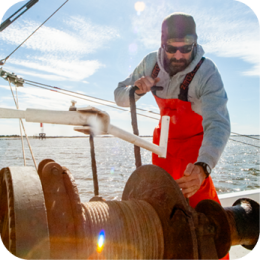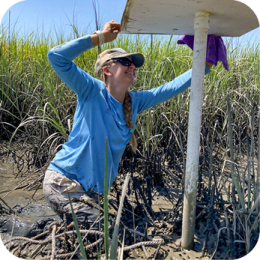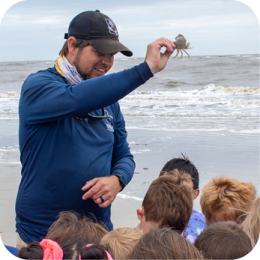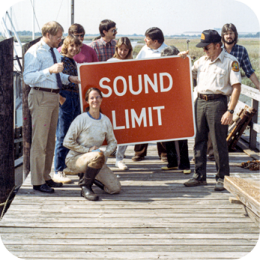
This photo from an unmanned aerial vehicle shows dredge material being deposited onto a newly man-made bird island at Cumberland Dividings in Camden County. The beneficial use of sediment project will provide new habitat for migrating birds and horseshoe crabs. Max Kleinshans/CRD.
By JIM LONG
COASTAL Management SPECIALIST
Coastal Resources Division
In a collaborative effort, members of CRD, WRD, and the U.S. Army Corps of Engineers on April 9 visited the site of a brand-new bird island located at Cumberland Dividings.
The Corps regularly dredges the Atlantic Intracoastal Waterway (AIWW) to maintain navigation channels. For the AIWW in Georgia, dredging is typically performed by a hydraulic cutterhead dredge. Sediment is excavated by a rotating cutterhead and then transported through a pipeline, that can be up to several thousand feet long to a placement location.
The duration of dredging project depends on many variables including the size of the dredging vessel, the amount of shoaled material to be dredged, the distance to the placement site, and the type of placement being performed.
Instead of placing the dredged material in an upland disposal area, using science-based evidence, the Corps and DNR teamed up to determine a beneficial use of the material – which in this case was the creation of a bird island.
Bird islands are an important nesting and foraging habitat for Georgia’s shorebirds. The creation of bird islands is an important wildlife conservation practice, especially in Georgia where strong tides and coastal storms erode these islands making them unsuitable for shorebirds.
Each year, Georgia’s coast hosts tens of thousands of transient migrating birds on their way between wintering grounds and the high arctic. The beneficial use of dredge material provides an intertidal habitat for foraging and roosting sites that will also benefit high priority species like whimbrel, red knot, and piping plover.
The island could also become an important spawning site for horseshoe crabs, which are a critical resource for migratory shore birds.
“Over the last decade we’ve seen a lot of deterioration of our offshore sand bars that serve as the productivity engines of our sea and shore bird populations along the Georgia coast,” said Tim Keyes, a WRD wildlife biologist. “Creating this island will provide new nesting habitats that are high enough that the tide won’t over wash them and far enough away from uplands where mammal predators could get to the nests.”
Keyes also said “this project has been fantastic thanks to our partnership with the CRD and the Army Corps, who have taken the initiative and ran with this. With their help we expect to create many great homes for several targeted species including American oyster catchers, Wilson’s plovers, royal terns, sandwich terns, black skimmers, gull-billed terns, least terns, and maybe even brown pelicans.”







